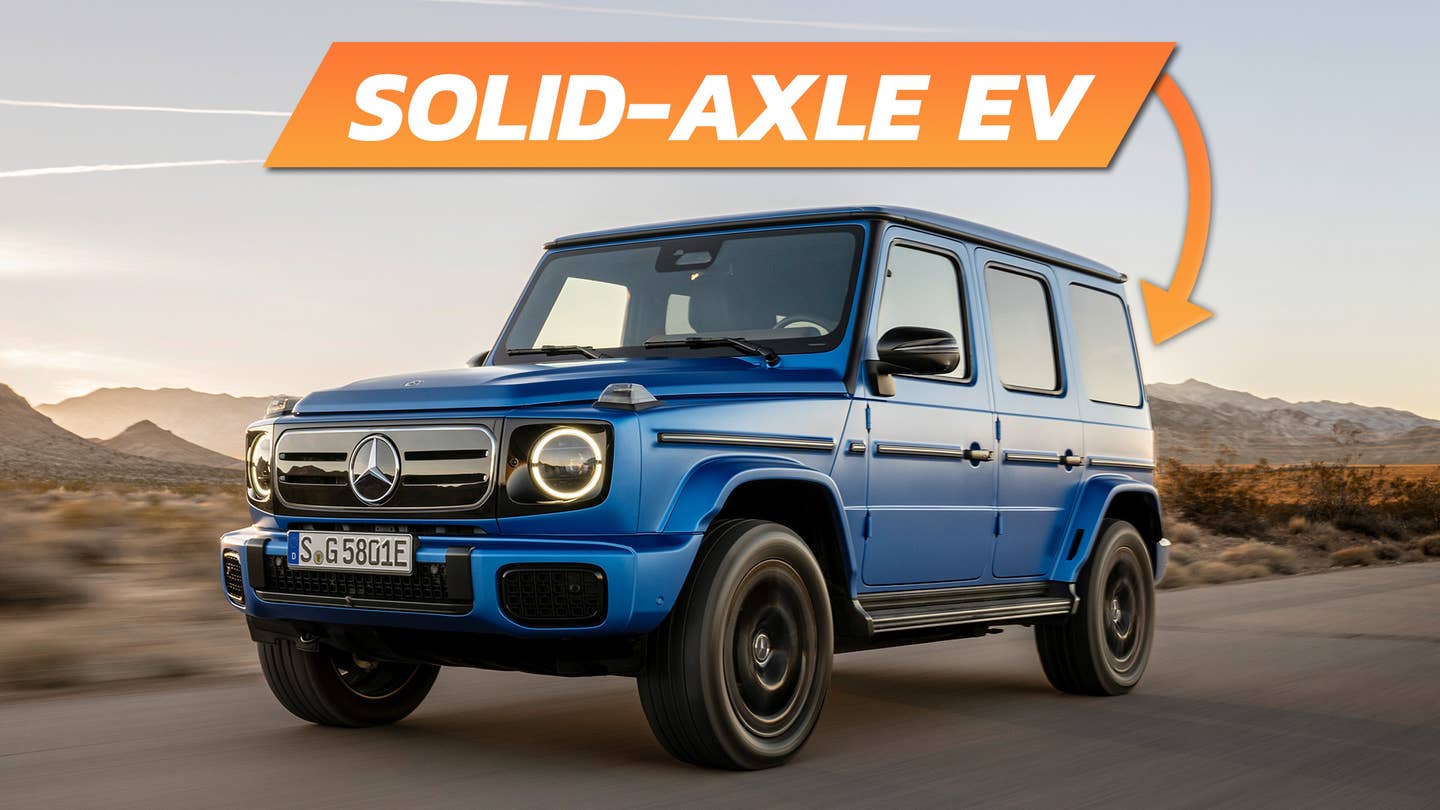It’s a quad-motor EV, but it still rides on a ladder frame with a solid rear axle. Here’s how.

The Mercedes G-Class is one of the original off-road icons—a mainstay in every sense of the word. First built in the 1970s, the G-Wagen debuted initially as a rugged, utilitarian SUV that was far happier off the road than on it. Over the decades that followed, it morphed into a luxury model while maintaining its body-on-frame underpinnings and four-wheeling capability. Now, Mercedes is changing it in the most radical way by making it electric.
Unfortunately, the first-ever all-electric G-Class may also mark Mercedes’ worst model name to date. Keep in mind this is the manufacturer that gave us the Mercedes-AMG GT63 S E Performance just a few days ago. It’s called the Mercedes-Benz G580 with EQ Technology, and out of principle, I won’t call it that. Was G580 EQ or even G580 Electric too simple?
Visually, the differences between the new electric G-Class and the traditional gas-powered one are subtle. The EV maintains the legendary boxy design, the large single-circle headlights, and the exterior compartment on the tailgate. However, you might notice something odd about the latter. Rather than the typical, circular spare tire cover, this one is square. That’s because it doesn’t actually house a spare tire; instead, that’s where the charging cable and accompanying accoutrements are.
This might be the part where you expect me to say it’s totally different under the skin, but it sort of isn’t. That’s the most genius part about the new electric G-Class. I’ll explain.
Like every G-Class before it, the new electric one still uses a ladder frame with a body bolted on top. Where the electric version differs is inside that ladder frame, as that’s the location of the 116-kilowatt-hour battery pack. To help you worry less about this powertrain switch compromising the G-Class’ rugged dependability, Mercedes has stored said pack inside a “torsion-resistant casing.” There’s also some carbon fiber underbody protection to keep the battery safe from pointy rocks.
The one and only electric G-Class, the G580, packs four electric motors with a combined 579 horsepower and 859 lb-ft of torque. What’s perhaps most fascinating about the truck is how it delivers this power. Indeed, there are four motors and it utilizes an independent front suspension, but there’s still a live axle out back. How does that work?
It’s an interesting assembly that Mercedes has actually used on Smart models before, believe it or not. Technically, it’s a De Dion design that allows the rear electric motors to be attached to the frame and the wheels. They spin the tires via double u-joint driveshafts that I’m dying to see. Because of this, the camber never changes during compression, providing more stability and consistent traction. From the sounds of it, this is an amazingly intricate design, especially if you’re more familiar with traditional 4x4s than EVs.
What’s more, it also has a selectable low-range gear reduction and virtual differential locks to help it put that power down on rocks, snow, or whatever the heck. It does this by utilizing each axle’s two motors and two transmissions, along with a double inverter in a shared housing. According to Mercedes, this helps the electro-G-Class climb 100% grades (on suitable surfaces, whatever that means), handle 35-degree lateral slopes, and ford through water that’s 33.5 inches deep—nearly six inches deeper than a gas G550 or a G63.
If you’re wondering whether the electric G-Class can tank turn, the answer is mostly yes. Mercedes baked in a function called G-Turn which allows the truck to rotate while stationary, using its four independently driven wheels. That said, there are three caveats. First, it can only be done on a suitably loose surface. Then, the driver needs to follow the exact procedural steps in order for it to work. Lastly, it will only do two complete turns before the function is deactivated. That’s actually a good thing as tank turns are horrible for trails; both expert off-roaders and environmentalists hate it. Mercedes allows it as a function to help get you out of a tricky situation and nothing more.
Mercedes uses that same technology, albeit to a lesser extent, to make the G-Class more nimble in tight off-road environments with a function called G-Steering. Using all four motors at each wheel, G-Steering drastically reduces the rig’s turn radius to help navigate tricky trails. It can only be used in low-range with its Rock mode engaged, and at speeds up to 15 mph.
Inside the electric G-Class, it’s business as usual. The battery-powered model’s cabin is every bit as opulent as the internal combustion version’s. It has some cool, electric-specific off-road displays but other than that, it’s the same. The G-Class has long been the most luxurious off-roader that’s actually serious about off-roading and that hasn’t changed.
How far you’ll be able to drive the electric G-Class is anybody’s guess right now. Mercedes hasn’t provided any solid range figures just yet, nor is there a price. Still, the automaker estimates it will be capable of zero to 60 mph in 4.6 seconds with a top speed of 112 mph. Its maximum charging speed is 200 kilowatts and it can get from a 10% state of charge to 80% in 32 minutes.
Of course, the Mercedes G580 with EQ Technology (I get physically ill saying that) isn’t the first electric off-roader. But it’s arguably the most historically significant model to do so. Sure, every Rivian is electric, and then there’s the GMC Hummer EV, but this is in another league when it comes to pedigree. While inevitable, it still feels big seeing a four-wheeling staple go electric.
Got tips? Send ’em to tips@thedrive.com


